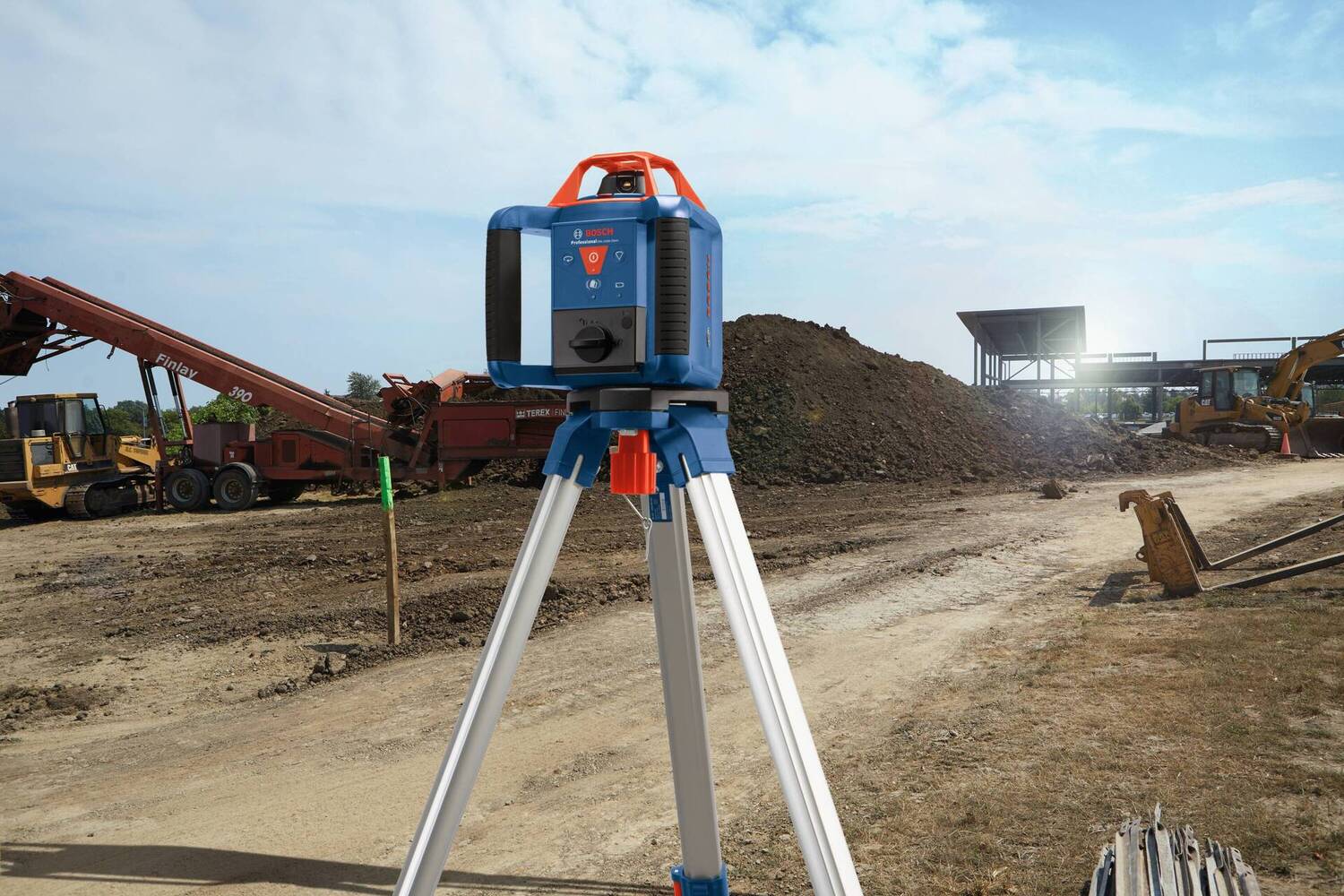

Articles
How Does Laser Level Work Dirt
Modified: January 24, 2024
Discover how laser level works and its practical applications in leveling dirt surfaces. Read informative articles on laser technology and dirt leveling techniques.
(Many of the links in this article redirect to a specific reviewed product. Your purchase of these products through affiliate links helps to generate commission for Storables.com, at no extra cost. Learn more)
Introduction
When it comes to construction projects or any task that requires precise leveling and alignment, a laser level is an invaluable tool. This versatile device has revolutionized the way professionals and DIY enthusiasts work, making processes more efficient and accurate. But how exactly does a laser level work and why is it so popular?
A laser level is a device that emits a laser beam to create a reference line or a level plane. It is commonly used in construction, surveying, and other applications where precise leveling and alignment are essential. Its widespread usage is a testament to its effectiveness and convenience.
In this article, we will delve deeper into the workings of a laser level, exploring its components, different types, advantages, and common applications. Whether you are a construction professional or a homeowner looking to undertake a renovation project, understanding how a laser level functions will enable you to make the most of this fantastic tool.
So, let’s get started and explore the fascinating world of laser levels!
Key Takeaways:
- Laser levels emit highly visible lines or dots for precise leveling and alignment, offering unparalleled accuracy and efficiency compared to traditional leveling tools.
- Understanding the components, working principles, and types of laser levels is crucial for selecting the right tool and maximizing its effectiveness in various projects.
Read more: How Does Laser Level Work
What is a Laser Level?
A laser level is a precision measurement tool used to create straight and level lines or planes over a certain distance. It utilizes a laser beam to project a highly visible line or dot onto a surface, providing a reference point for accurate leveling or alignment.
Unlike traditional spirit levels or bubble levels, which rely on the force of gravity, laser levels use advanced technology to emit a laser beam that remains level over long distances. This allows for greater precision and eliminates the need for tedious adjustments when working on larger projects.
Laser levels come in various forms, including line laser levels, rotary laser levels, and dot laser levels. Line laser levels project a straight line, perfect for tasks such as hanging pictures or installing tiles. Rotary laser levels emit a 360-degree laser beam, making them ideal for construction projects that require a level plane over long distances. Dot laser levels project individual dots at specific points, useful for plumbing work or other tasks that require precise point-to-point alignment.
Laser levels are powered by either batteries or rechargeable batteries, depending on the model. Some laser levels also feature additional functions such as self-leveling capabilities, remote control operation, and the ability to switch between horizontal and vertical lines.
Overall, a laser level is an essential tool for anyone who needs precise leveling and alignment in their work. It offers unparalleled accuracy, ease of use, and versatility, making it a must-have for construction professionals, engineers, surveyors, and even homeowners undertaking DIY projects. With a laser level in hand, you can ensure that your work is completed with utmost precision and professionalism.
Components of a Laser Level
A laser level consists of several key components that work together to emit a laser beam and create a precise reference line or plane. Understanding these components will give you a better insight into how a laser level functions:
- Laser Diode: The laser diode is the core component that emits the laser beam. It converts electrical energy into coherent light, producing a highly focused and visible beam.
- Power Source: Laser levels are typically powered by either batteries or rechargeable batteries. The power source provides the necessary electrical energy to operate the laser diode.
- Leveling Mechanism: In order to maintain accuracy, laser levels often incorporate a leveling mechanism. This mechanism automatically adjusts the position of the laser diode to ensure it remains level, even on uneven surfaces.
- Beam Splitter: The beam splitter is responsible for splitting the laser beam into multiple beams. This is commonly found in line laser levels, where the beam splitter divides the laser beam into vertical and horizontal lines.
- Mirrors: Mirrors are used to redirect the laser beam, allowing it to cover a larger area. In rotary laser levels, the mirrors spin rapidly to create a 360-degree beam projection.
- Receiver: Some laser levels come with a receiver or detector that can be used to detect the laser beam over long distances or in bright lighting conditions. The receiver helps users achieve greater accuracy and visibility.
- Control Panel: Laser levels often feature a control panel with buttons or dials that allow users to adjust settings, toggle between modes, or activate additional features such as self-leveling or manual leveling.
- Mounting Options: Laser levels can be mounted on various surfaces or tripods to ensure stability and accurate positioning. They typically feature mounting threads or brackets that make it easy to attach to different supports.
These components work in conjunction to create a laser beam and project it onto a surface, providing users with a precise reference line or plane. The combination of advanced technology, precision engineering, and innovative design makes laser levels indispensable tools for professionals and DIY enthusiasts alike.
How Does a Laser Level Work?
At first glance, a laser level may seem like a complex device, but its basic principle of operation is relatively straightforward. Here is a step-by-step breakdown of how a laser level works:
- Powering On: To begin, you power on the laser level using the designated switch or button. This activates the laser diode and begins the emission of the laser beam.
- Leveling: Many laser levels are equipped with a self-leveling mechanism. This mechanism uses a pendulum or electronic sensor to detect any deviation from a level position. If the laser level is not level, the internal mechanism adjusts the position of the laser diode to bring it back to a level state.
- Laser Emission: Once the laser level is level, it emits a highly focused and visible laser beam. The type of beam emitted depends on the specific laser level, whether it is a line laser level, rotary laser level, or dot laser level.
- Beam Projection: In line laser levels, the laser beam passes through a beam splitter, which splits it into horizontal and vertical beams. The beam splitter directs these beams towards mirrors, which further redirect the beams to extend the line projection over a larger area.
- Rotary Projection (if applicable): In rotary laser levels, the mirrors spin rapidly, continuously deflecting the laser beam. This creates a 360-degree projection, covering all directions horizontally.
- Visible Line or Dot: The laser beam finally reaches the surface and creates a bright, visible line or dot. This acts as a reference for accurate leveling, alignment, or measurement.
- Receiver Detection (if applicable): In situations where the laser beam needs to be detected over long distances or in bright lighting conditions, a receiver or detector may be used. The receiver picks up the laser beam’s signal and provides an audible or visual indication of its position.
- Adjustments: Laser levels often have control panels that allow users to adjust settings such as beam brightness, rotation speed (for rotary laser levels), or switch between various modes like manual leveling. These adjustments provide versatility and precision for different applications.
- Powering Off: When you are finished with your work, you can power off the laser level to conserve battery life and ensure safe storage.
The working principles of a laser level may vary slightly based on the specific model and manufacturer. However, the overall process of emitting a laser beam, projecting it onto a surface, and creating a visible reference line or dot remains consistent across most laser levels.
By understanding how a laser level works, you can effectively utilize this powerful tool for accurate leveling, alignment, and other tasks that require precise measurements.
Types of Laser Levels
Laser levels come in various types, each catering to specific applications and project requirements. Let’s explore the different types of laser levels available:
- Line Laser Levels: Line laser levels project a straight, continuous line onto a surface. They are ideal for tasks that require precise alignment, such as installing cabinets, shelves, or tiles. Line laser levels can emit both horizontal and vertical lines, allowing for versatile applications.
- Rotary Laser Levels: Rotary laser levels emit a 360-degree laser beam that rotates continuously, creating a level plane around the entire workspace. They are commonly used in construction and large-scale projects that require precise leveling, such as installing foundations, laying out walls, or grading land.
- Dot Laser Levels: Dot laser levels project individual dots at specific points. They are primarily used for pinpoint accuracy, such as plumbing or electrical work. Dot laser levels allow for precise alignment from point to point, making them valuable tools in layout applications.
- Cross-Line Laser Levels: Cross-line laser levels combine the functionality of line laser levels by projecting both horizontal and vertical lines simultaneously. They are versatile and useful for various projects, including framing walls, suspended ceiling installations, or tiling.
- Plumb Laser Levels: Plumb laser levels are specifically designed for vertical alignment tasks. They project a straight, vertical line upward or downward, ensuring precise plumb alignment for applications like installing columns, staircases, or plumbing pipes.
- Laser Distance Measures: While not strictly categorized as laser levels, laser distance measures use laser technology to provide accurate measurements of distances. These handheld devices allow users to quickly and easily measure distances, areas, and volumes, making them handy tools for estimating materials or layouts.
Each type of laser level offers unique features and functionalities suited for specific applications. Choosing the right type of laser level depends on the nature of your project and the level of precision required.
It is worth noting that some laser level models incorporate multiple functionalities, allowing them to switch between different modes or combine features. This flexibility provides users with even greater versatility and convenience in their work.
By understanding the different types of laser levels available, you can select the most suitable one that will meet your project requirements and deliver the desired results with precision and efficiency.
Read more: How Does An Electronic Laser Level Work?
Advantages of Using a Laser Level
Using a laser level offers a wide range of advantages over traditional leveling and alignment methods. Let’s explore some of the key benefits of using a laser level:
- Precision: Laser levels provide exceptional accuracy and precision, ensuring that your measurements, alignments, and leveling are done with utmost accuracy. The laser beam creates a clear and visible reference line or dot, making it easy to achieve precise results.
- Efficiency: With a laser level, you can complete your projects more efficiently. The laser beam allows for quick and accurate leveling and alignment, eliminating the need for tedious manual measurements or adjustments. This saves you time and effort, allowing you to focus on other aspects of your project.
- Consistency: Laser levels offer consistent results, ensuring that your work is uniform and level throughout. Unlike traditional spirit levels, which can be prone to human error, laser levels maintain a consistent reference line or plane over long distances, resulting in a professional and polished finish.
- Long-Range Capabilities: Laser levels are particularly useful for large-scale projects that require leveling or alignment over long distances. Rotary laser levels, in particular, can project a 360-degree laser beam, allowing for easy leveling of entire rooms or outdoor spaces.
- Versatility: Laser levels come in various types, each catering to different applications. Whether you need to align tiles, install cabinets, or grade land, there is a laser level designed specifically for that task. The versatility of laser levels allows for greater adaptability across different projects and requirements.
- Improved Safety: Laser levels promote safety by minimizing the risk of accidents and errors. The clear and visible laser beam provides a clear reference point, reducing the need for manual measurements and guesswork. This helps prevent mistakes and ensures that your work is carried out accurately and securely.
- Ease of Use: Laser levels are user-friendly and easy to operate, making them suitable for both professionals and DIY enthusiasts. Many laser levels feature self-leveling mechanisms, simplifying the leveling process. Additionally, they often come with intuitive controls and clear instructions, allowing for quick setup and usage.
- Cost-Effective: While laser levels may require an initial investment, they can save you money in the long run. Their accuracy and efficiency help minimize material wastage and reduce the need for rework. By getting your measurements and alignments right the first time, you can avoid costly mistakes and delays.
These advantages collectively make laser levels indispensable tools for a wide range of applications, including construction, surveying, interior design, and more. Investing in a quality laser level can significantly enhance productivity, accuracy, and overall project outcomes.
Laser levels work by emitting a highly focused beam of light onto a surface, creating a straight and level reference line. The beam is typically generated by a diode and then projected through a lens to create a visible line.
Factors to Consider When Choosing a Laser Level
When selecting a laser level, it is essential to consider various factors to ensure that you choose the right tool for your specific needs. Here are some key factors to consider when choosing a laser level:
- Type of Laser Level: Determine the type of laser level that suits your project requirements. Consider whether you need a line laser level, rotary laser level, dot laser level, or a combination of multiple functionalities.
- Accuracy: Check the accuracy specifications of the laser level. Higher accuracy levels are crucial for projects that demand precise measurements and alignments.
- Range: Consider the range of the laser level. This refers to the maximum distance over which the laser beam remains visible and accurate. Ensure that the range suits the size and scale of your project.
- Self-Leveling Mechanism: Determine whether you need a laser level with a self-leveling mechanism. This feature automatically adjusts the laser beam to remain level, simplifying the operation and ensuring accuracy.
- Visibility: Assess the visibility of the laser beam. Look for a laser level that provides a bright, visible beam, even in well-lit conditions or over long distances. This is especially important for outdoor projects or environments with high ambient light.
- Durability: Consider the durability and build quality of the laser level. Look for a device that can withstand rugged conditions and is resistant to dust, water, and impact, especially if you will be using it in demanding environments.
- Battery Life: Check the battery life of the laser level, especially if you require extended usage. Longer battery life ensures uninterrupted operation and reduces the frequency of recharging or replacing batteries.
- Mounting Options: Evaluate the mounting options available with the laser level. Look for a device that has compatible mounting threads or brackets, allowing for easy setup and stability during use.
- Additional Features: Consider any additional features or functionalities that may enhance your work. This could include features like remote control operation, multiple laser modes, or compatibility with laser detectors.
- Brand Reputation and Reviews: Research the brand reputation and read user reviews of the laser level you are considering. This can provide insights into the product’s performance, reliability, and customer satisfaction.
By considering these factors, you can select a laser level that meets your specific requirements and ensures optimal performance and accuracy for your projects.
Common Applications of Laser Levels
Laser levels have a wide range of applications across various industries and projects. Their high accuracy and ease of use make them valuable tools for professionals and homeowners alike. Let’s explore some common applications of laser levels:
- Construction: Laser levels are extensively used in construction projects for tasks such as leveling and aligning walls, foundations, and floors. They ensure that structures are built straight and level, improving overall project quality.
- Interior Design: Laser levels are essential for interior design projects. They help with precise alignment when installing cabinets, shelves, and artwork. They also ensure accurate placement of tiles, wallpaper, or molding, resulting in a professional and polished finish.
- Landscaping: Laser levels play a crucial role in landscaping projects, such as grading and leveling yards or creating terraces. They help achieve consistent slopes and elevations, ensuring proper drainage and enhancing the aesthetics of outdoor spaces.
- Surveying: Laser levels are widely used in surveying to establish horizontal and vertical reference lines. They aid in land surveying, road construction, and infrastructure development, ensuring precise measurements and alignments.
- Plumbing and Electrical Work: Laser levels assist in plumbing and electrical installations. They provide accurate reference lines for aligning pipes, conduit, and electrical fixtures, ensuring proper alignment and minimizing the risk of leaks or electrical malfunctions.
- Tile and Flooring Installation: Laser levels are indispensable tools for tile and flooring installers. They help create straight and level lines, ensuring precise alignment and uniform tile or flooring layout. This results in visually appealing and professional-looking installations.
- Painting: Laser levels aid in painting projects, allowing for accurate masking and creating straight lines. They help achieve clean and precise edges when painting walls, ceilings, or furniture, giving a neat and professional finish.
- Suspended Ceiling Installation: Laser levels are used extensively in suspended ceiling installations. They ensure precise leveling and alignment of ceiling grids, ensuring a seamless and uniform appearance across the entire space.
- Furniture Assembly: Laser levels facilitate furniture assembly by providing guidance for alignment and leveling. They aid in installing shelving, brackets, or other components, ensuring proper alignment and stability.
- DIY Projects: Laser levels are valuable tools for DIY enthusiasts. They assist in various projects, such as hanging pictures, installing curtain rods, or building decks. Laser levels make these tasks easier and ensure professional-looking results.
These are just a few examples of the many applications of laser levels across different industries and projects. The versatility and precision of laser levels make them essential tools for anyone who values accuracy, efficiency, and quality in their work.
Tips for Proper Usage of a Laser Level
To maximize the effectiveness and accuracy of your laser level, it’s important to follow these tips for proper usage:
- Read the Manual: Familiarize yourself with the laser level’s user manual. This will provide essential information about its features, functionality, and recommended operation. Understanding the manufacturer’s instructions is crucial for safe and effective usage.
- Ensure Proper Calibration: Before each use, ensure that the laser level is properly calibrated. This step is particularly important for self-leveling laser levels. Follow the calibration procedures outlined in the manual to guarantee accurate measurements and alignments.
- Select a Suitable Surface: Place the laser level on a stable and level surface or mount it securely to a tripod or stand. Avoid placing it on unstable or uneven surfaces that can compromise the accuracy of the laser beam.
- Check Battery Life: Always check the battery life of your laser level before starting a project. Replace or recharge the batteries as needed to ensure uninterrupted operation. It’s also a good practice to carry spare batteries or a charger with you, especially for longer projects.
- Protect the Laser Level: Handle your laser level with care to avoid damaging the delicate internal components. Keep it away from extreme temperatures, water, dust, and other potentially harmful elements. When not in use, store it in a protective case to prevent accidental damage.
- Use Receiver in Bright Conditions: In bright lighting conditions or over longer distances, consider using a receiver or detector with your laser level. This will enhance the visibility of the laser beam and enable accurate measurements, even in challenging environments.
- Follow Safety Guidelines: Use appropriate safety precautions when operating a laser level. Avoid pointing the laser beam directly at anyone’s eyes, as it can cause harm. Additionally, be cautious when working at heights or in potentially hazardous areas.
- Double-Check Measurements: While laser levels are highly accurate, it’s always a good practice to double-check your measurements using traditional methods, such as a tape measure or spirit level. This will ensure that your work aligns with your desired outcomes.
- Regularly Clean and Maintain: Keep your laser level clean and free from dirt, dust, and debris. Regularly wipe the lens and housing with a soft, lint-free cloth to maintain optimal visibility. Follow any specific maintenance recommendations provided by the manufacturer.
- Practice and Test: Before starting a critical project, take the time to practice and test your laser level in a controlled environment. This will help you become familiar with its operation and ensure that it is functioning correctly.
By following these tips, you can ensure the proper usage and maintenance of your laser level, allowing you to achieve accurate results and prolonging the life of the tool. Remember to prioritize safety, remain diligent, and always refer to the manufacturer’s guidelines for specific instructions.
Read more: How To Work A Water Level Or Laser Level
Frequently Asked Questions (FAQs)
Here are some commonly asked questions about laser levels:
- Q: What is the difference between a laser level and a traditional level?
- Q: How far can a laser level project?
- Q: Are laser levels self-leveling?
- Q: How accurate are laser levels?
- Q: Can laser levels be used outdoors?
- Q: Can laser levels be used for DIY projects?
- Q: How do I maintain and clean my laser level?
- Q: Can laser levels be used for outdoor construction projects?
- Q: Are laser levels safe to use?
- Q: Can laser levels be used on uneven surfaces?
A: Laser levels use laser technology to project a straight reference line or plane, offering higher accuracy and versatility compared to traditional spirit levels or bubble levels that rely on gravity.
A: The projection range of a laser level can vary depending on the specific model. Entry-level models may have a range of 30-50 feet, while professional-grade laser levels can project up to several hundred feet.
A: Many laser levels feature a self-leveling mechanism that automatically adjusts the position of the laser beam to remain level. This eliminates the need for manual adjustments and ensures accurate results.
A: Laser levels provide high accuracy levels, typically ranging from ±1/16 inch to ±1/8 inch per 100 feet. However, it’s important to refer to the manufacturer’s specifications regarding accuracy for your specific model.
A: Yes, many laser levels can be used outdoors. However, the visibility of the laser beam may be affected by bright sunlight or long distances. In such cases, using a receiver or detector can enhance visibility.
A: Absolutely! Laser levels are great tools for DIY projects. They can assist with tasks like hanging pictures, installing shelves, or aligning tiles. Laser levels ensure accuracy and give your projects a professional touch.
A: To maintain your laser level, keep it clean and free from dirt and debris. Regularly wipe the lens and housing with a soft, lint-free cloth. Store it in a protective case when not in use, and follow any specific maintenance guidelines from the manufacturer.
A: Yes, laser levels are commonly used for outdoor construction projects. Whether it’s grading land, setting up foundations, or aligning walls, laser levels provide the necessary accuracy and visibility to ensure precise results.
A: Laser levels are generally safe to use when handled responsibly. However, it’s important to avoid pointing the laser beam directly into anyone’s eyes, as it can cause harm. Adhering to safety guidelines and using caution when operating a laser level is essential.
A: Yes, laser levels can be used on uneven surfaces. Most laser levels have a self-leveling mechanism that compensates for slight unevenness. However, for extremely uneven surfaces or significant deviations, additional adjustments may be necessary.
These FAQs cover common inquiries regarding laser levels. If you have further questions or concerns, refer to the user manual of your specific laser level or consult with the manufacturer for more detailed information.
Conclusion
Laser levels have revolutionized the way professionals and DIY enthusiasts approach leveling, alignment, and measurement tasks. With their high accuracy, versatility, and ease of use, laser levels have become indispensable tools in various industries and projects.
In this article, we explored the fundamentals of laser levels, including their components, working principles, types, advantages, common applications, and tips for proper usage. Laser levels provide precise reference lines or planes, allowing for accurate leveling, alignment, and measurement. Whether you’re working on construction projects, interior design, landscaping, or DIY tasks, a laser level can help you achieve professional and polished results.
When choosing a laser level, consider factors such as the required accuracy, range, self-leveling capabilities, visibility, and durability. It’s important to select a laser level that meets your specific project requirements to ensure optimal performance and accuracy.
By following the proper usage tips, practicing safety precautions, and regularly maintaining your laser level, you can ensure a long lifespan and maximize its effectiveness. Remember to refer to the manufacturer’s instructions and guidelines for your specific model.
In conclusion, laser levels have transformed the way we approach leveling and alignment tasks, making them faster, more efficient, and more accurate. These cutting-edge tools have empowered professionals and DIY enthusiasts to achieve precise, professional-looking results in their projects. So, whether you’re a construction professional or a homeowner taking on a DIY project, a laser level is a valuable investment that will undoubtedly enhance your work.
Frequently Asked Questions about How Does Laser Level Work Dirt
Was this page helpful?
At Storables.com, we guarantee accurate and reliable information. Our content, validated by Expert Board Contributors, is crafted following stringent Editorial Policies. We're committed to providing you with well-researched, expert-backed insights for all your informational needs.



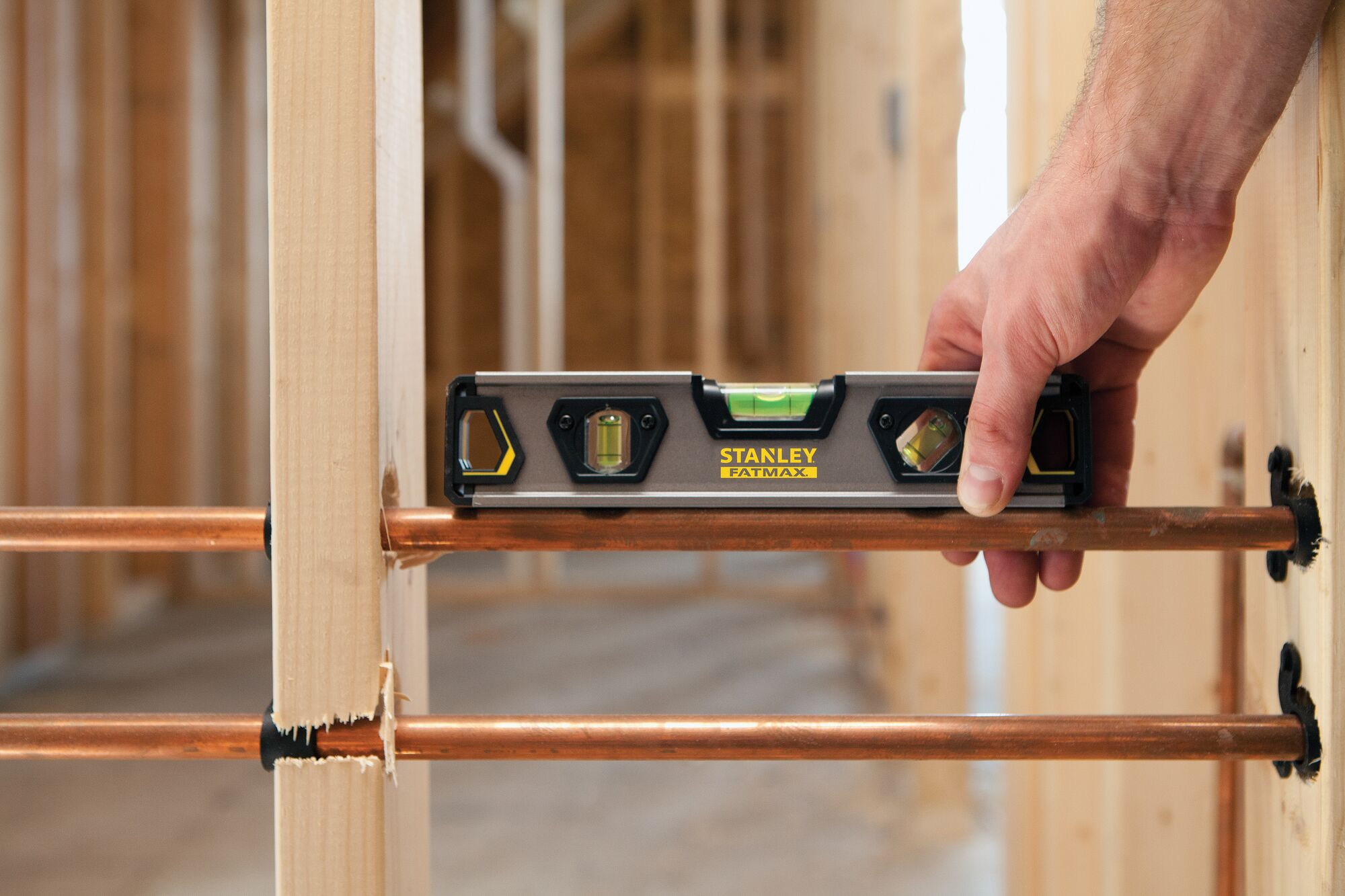
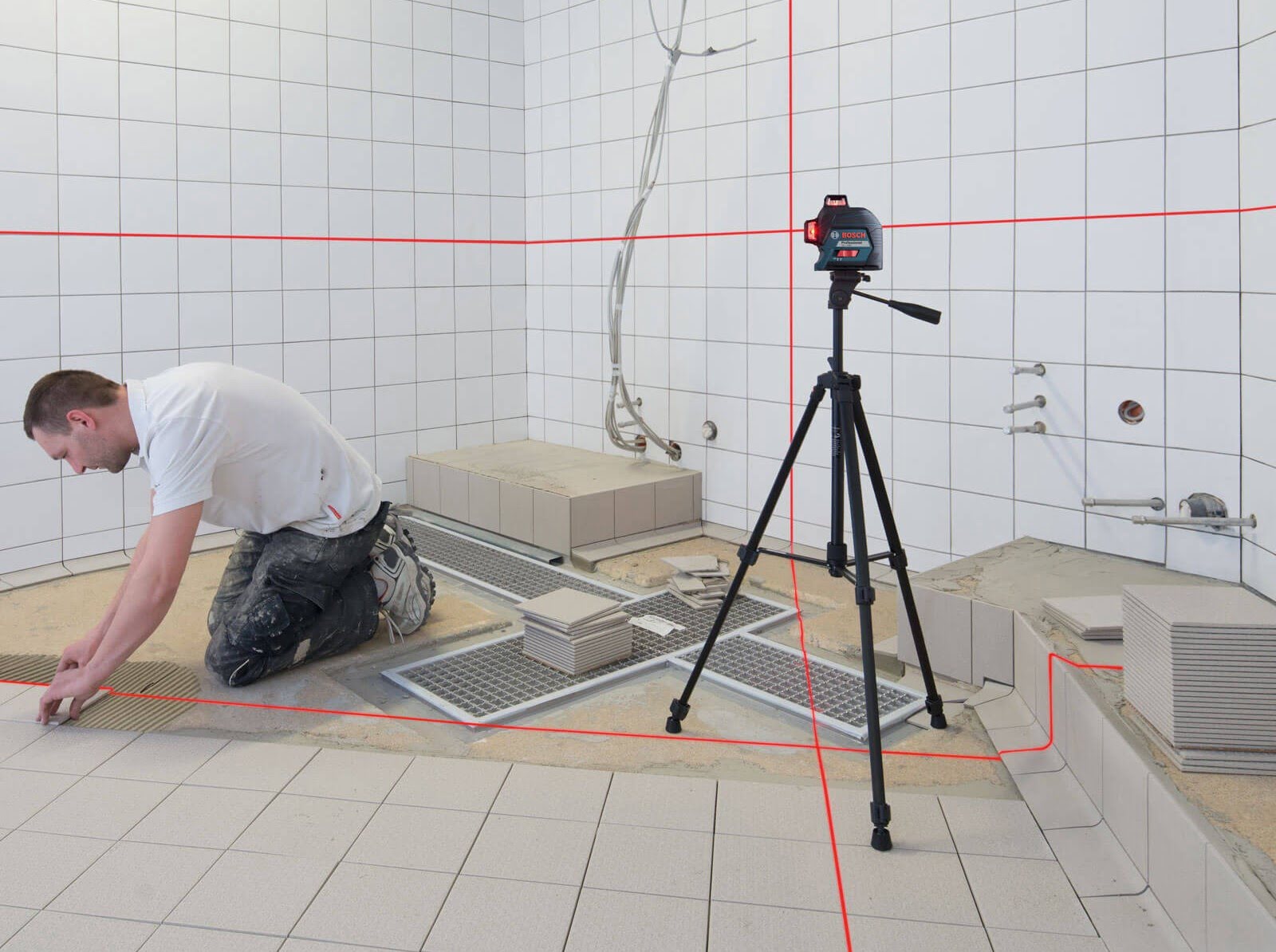
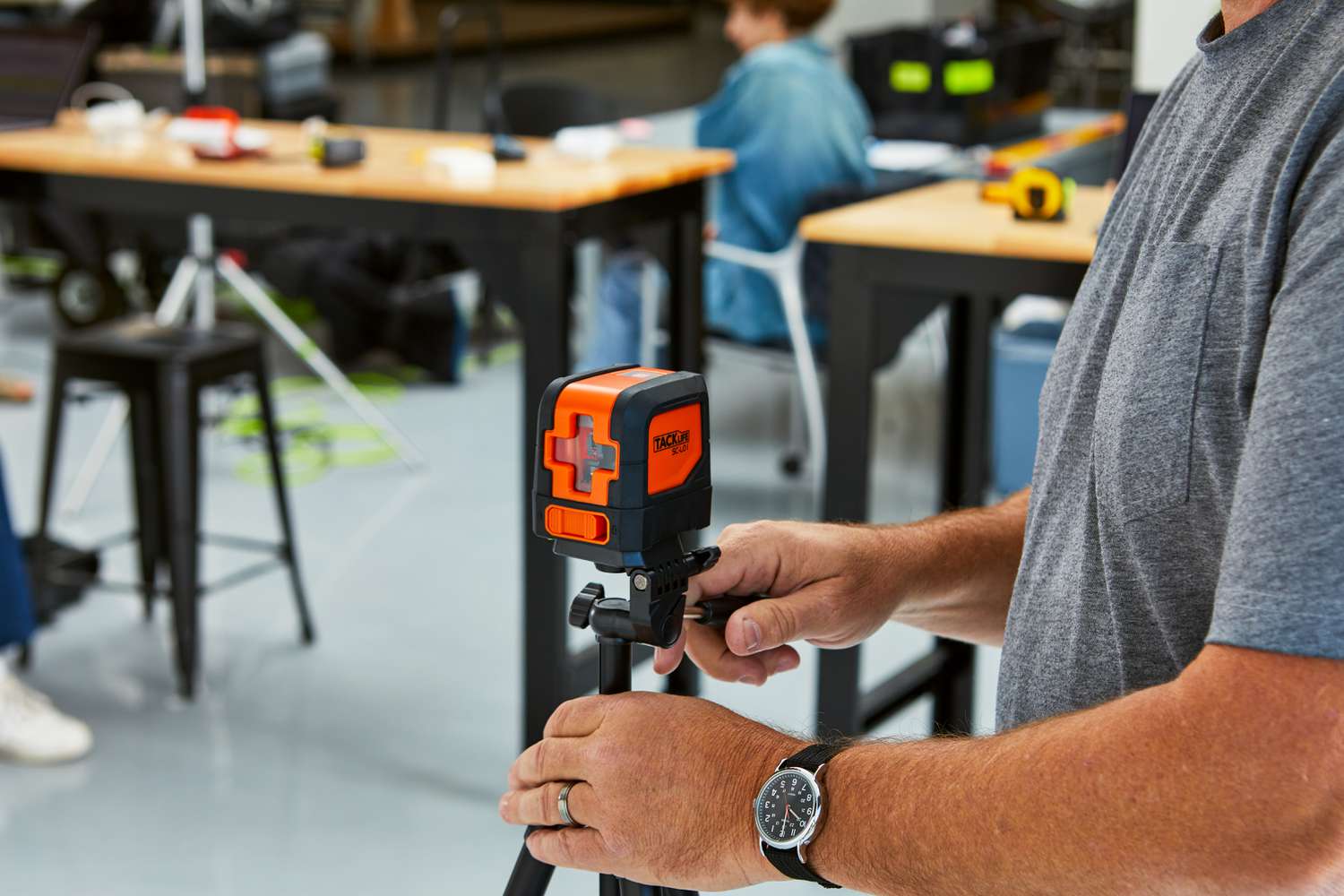
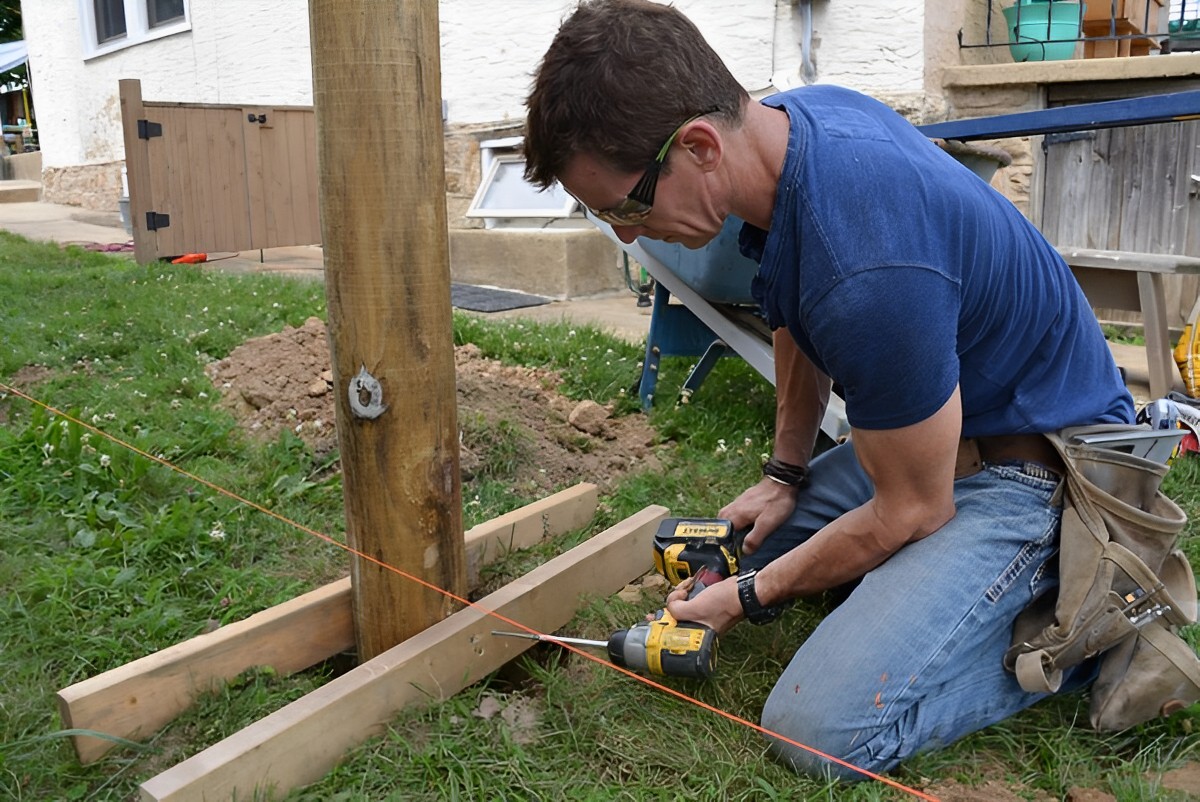
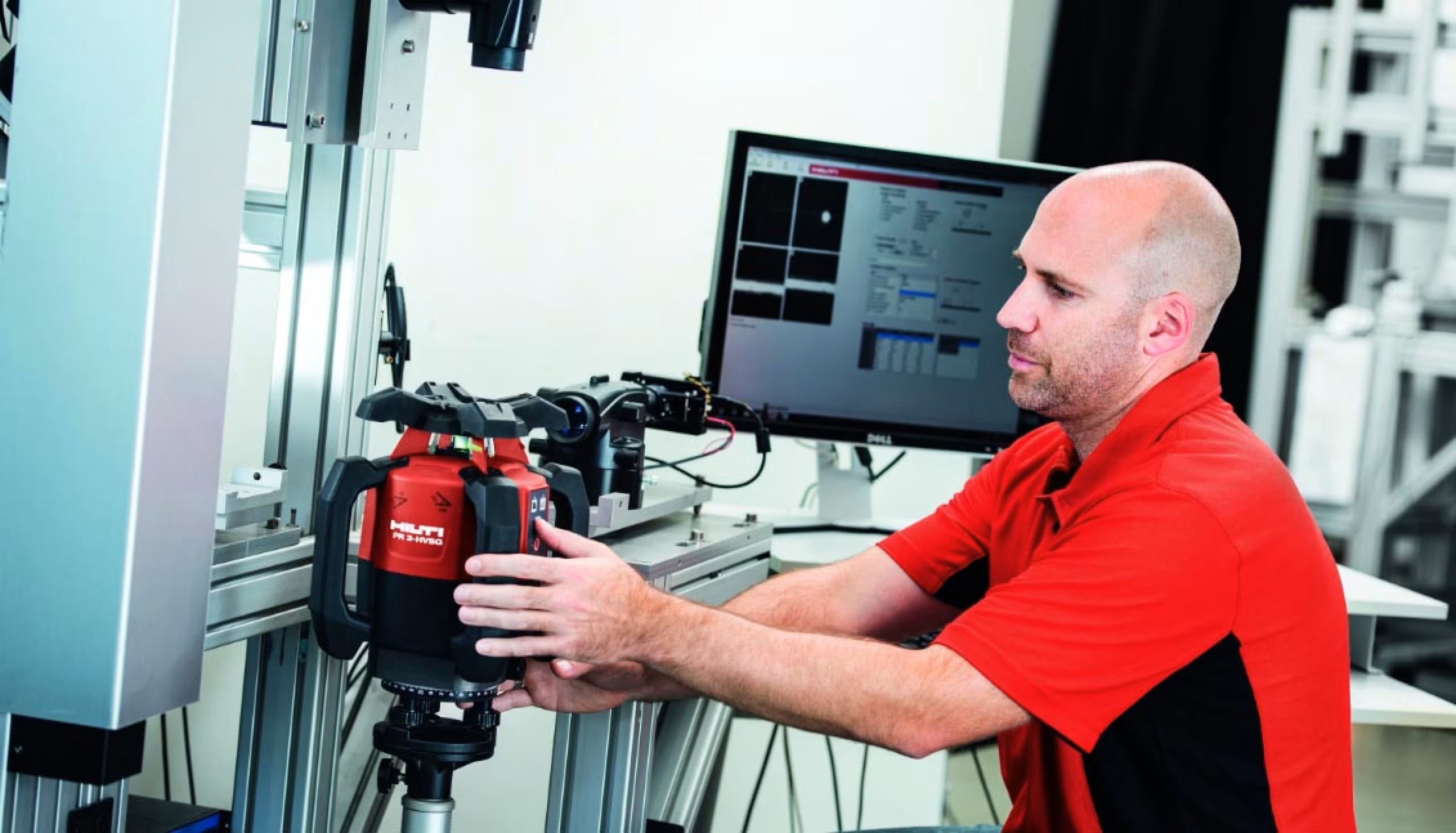


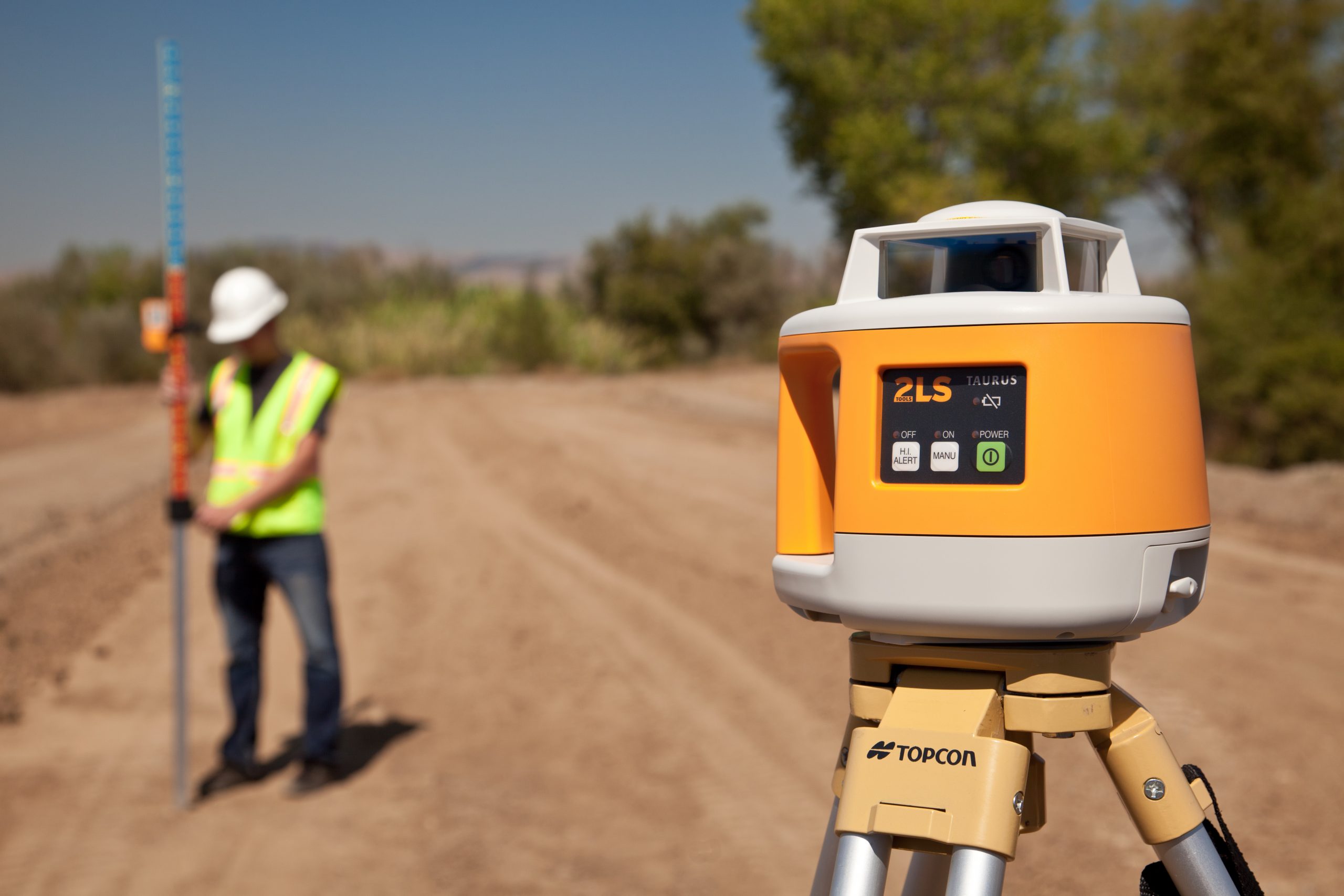
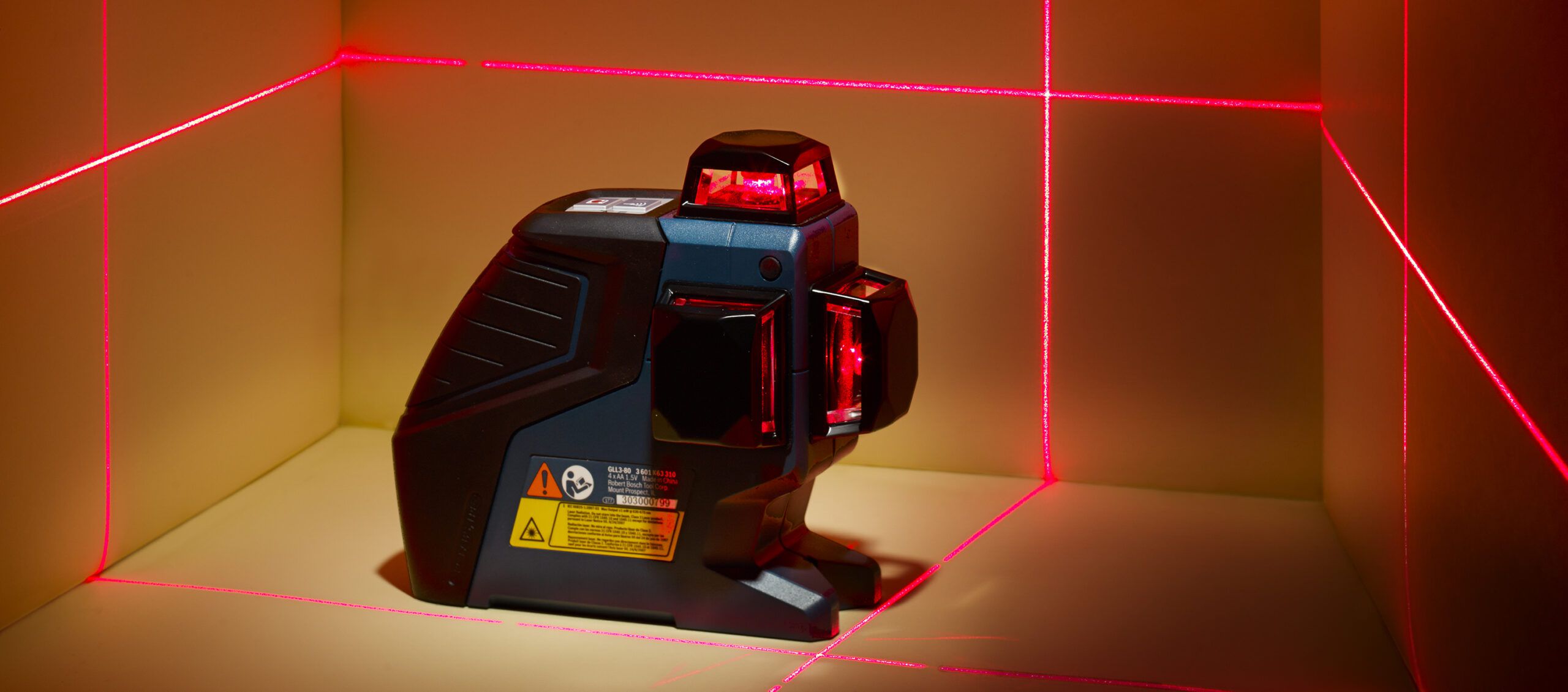
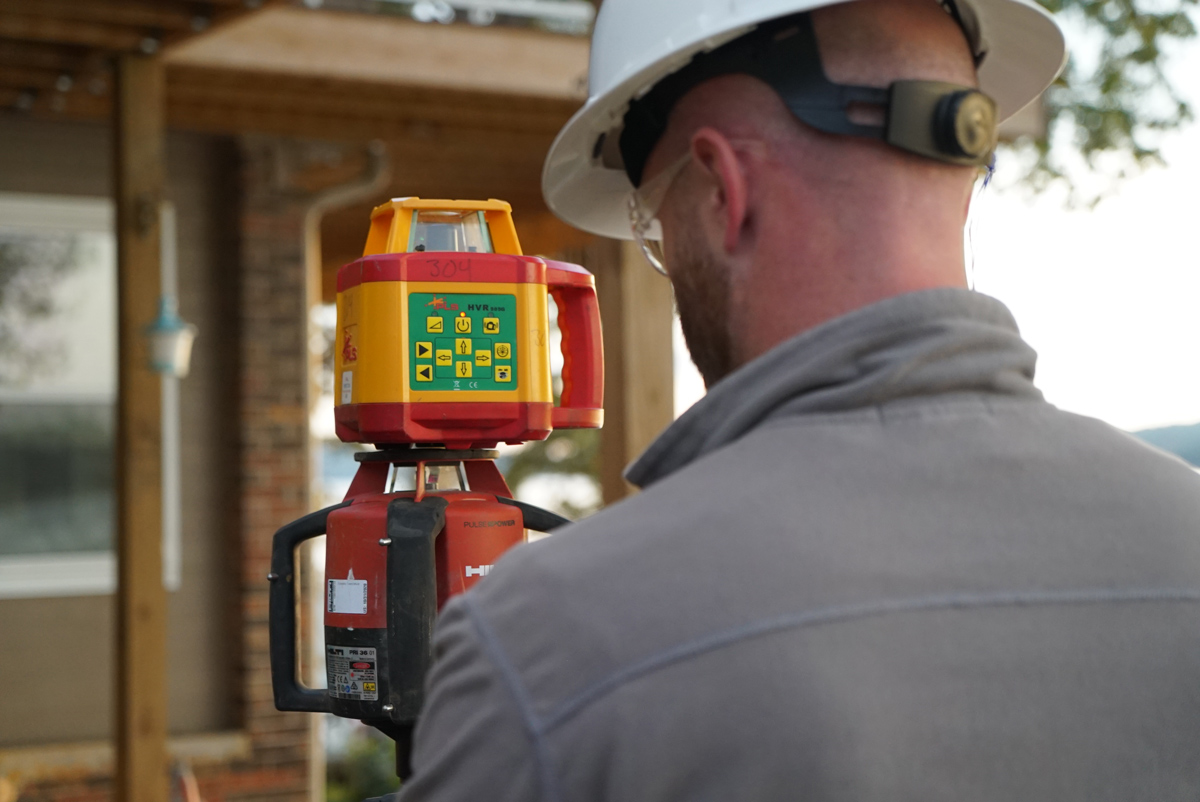

0 thoughts on “How Does Laser Level Work Dirt”